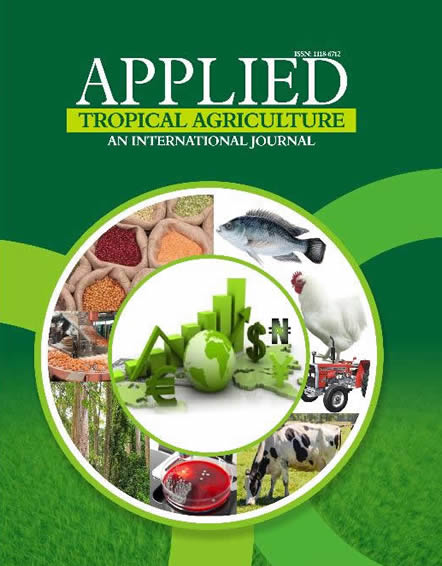The effect of nutrient source on the phenotypic expression and gall formation in okra (Abelmoschus esculentus Moench) was investigated in the Research Garden of the Department of Biological Sciences, Kogi State University, Anyigba, Nigeria. Okra seeds of a local variety were sown in four raised beds labeled A, B, C and D. NPK, poultry manure and cow dung were applied to beds B, C and D respectively while bed A served as the control. Each of the beds was replicated three times and the experimental design used was the completely randomized design (CRD). Three seeds were planted per hole giving a total of 30 plant stands per bed with a spacing of 50 cm x 45 cm. At the stage of flower production, the plant height, stem diameter, number of leaves per plant, number of nodes per plant, leaf area and member of branches per plant were determined and the mean value for each bed calculated from five plants in each case. At harvest, the final plant height, pod length, pod diameter, number of pods per plant, number of seeds per pod and weight of an hundred seeds were also determined and the mean value for each bed calculated from five plants in each case. Data were subjected to analysis of variance (ANOVA) and means separated using the least significant difference (LSD). The total number of okra plants infected with the gall disease in each bed was estimated as a percentage of the total number of plants in that bed. Results show that, out of the 12 vegetative and pod characteristics investigated, eight are greatly influenced by variation in nutrient source, while family namely leaf area, pod length, number of poid per plant and number of branches per plant are stable across the nutrient sources, suggesting that they are strongly under the control of the plants genotype, The percentage of gall infection is highest in the control bed, indicating that fertilizer application makes okra plants less susceptible to disease.


